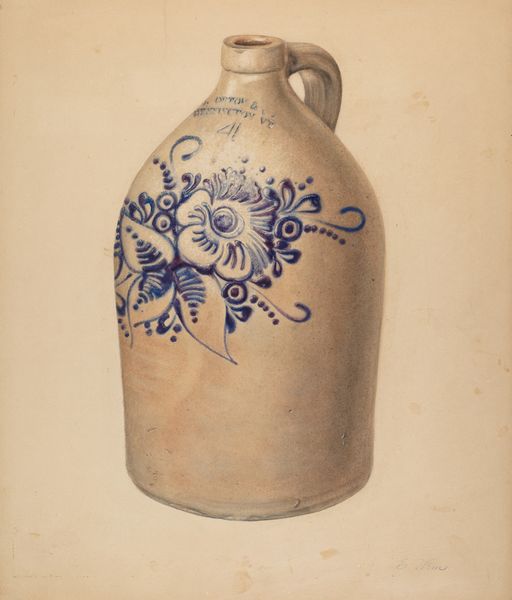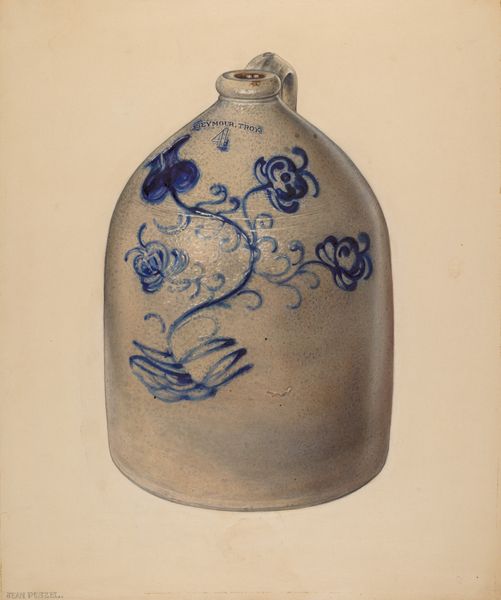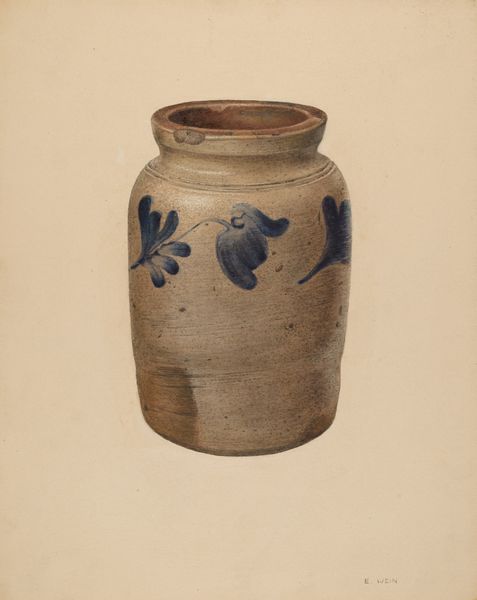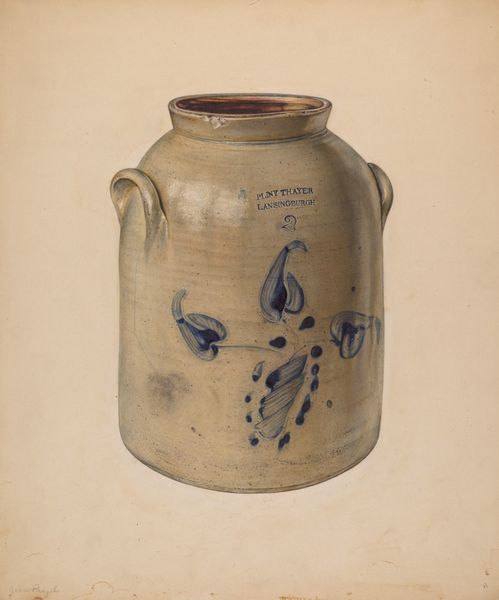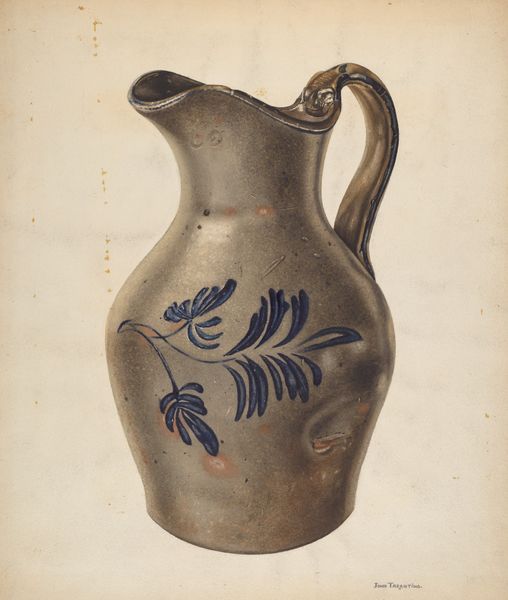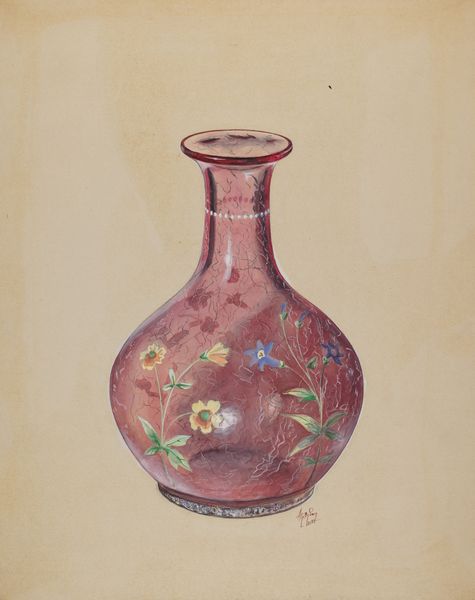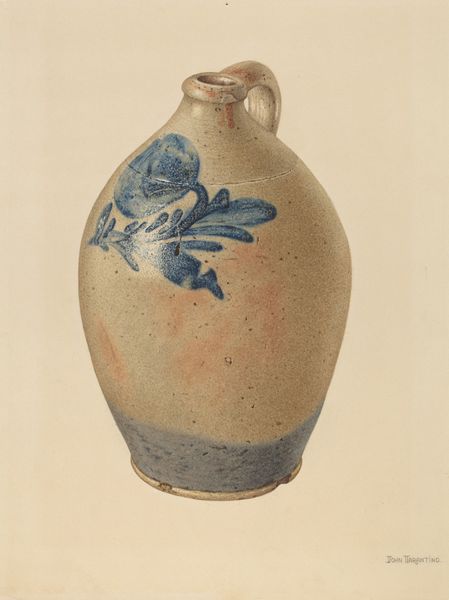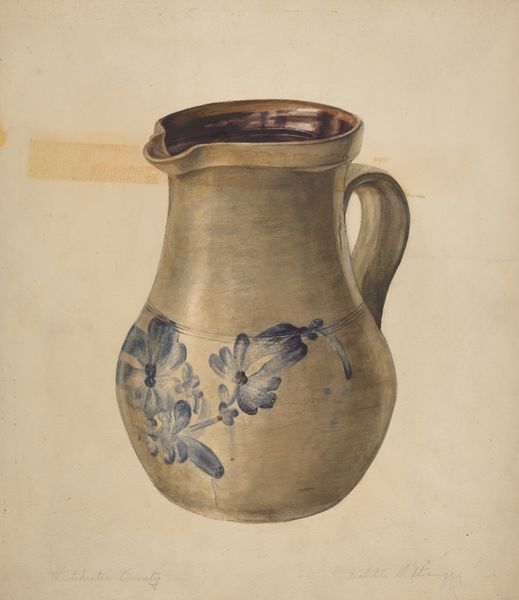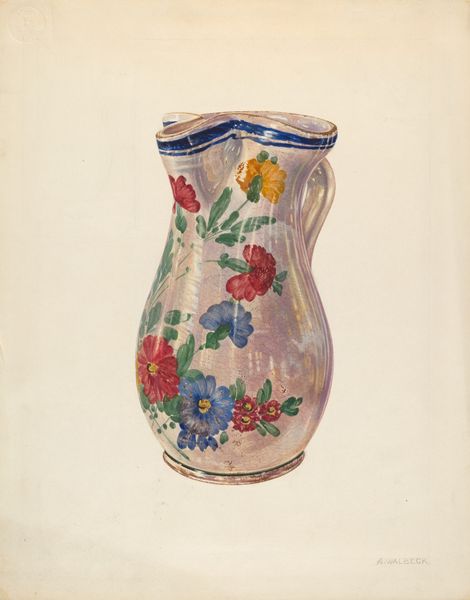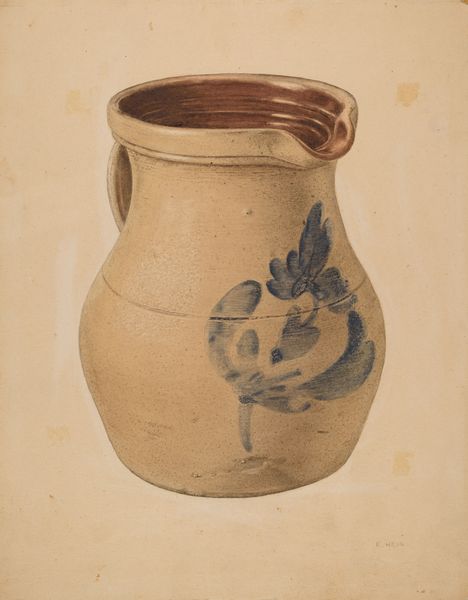
drawing, coloured-pencil
#
drawing
#
coloured-pencil
#
coloured pencil
#
modernism
#
realism
Dimensions: overall: 28.9 x 22.6 cm (11 3/8 x 8 7/8 in.)
Copyright: National Gallery of Art: CC0 1.0
Editor: Here we have Francis Borelli's "Jug," created sometime between 1935 and 1942, a coloured pencil drawing. There's something quite simple and sturdy about it, almost homely. How do you interpret this work? Curator: It's precisely that sense of familiarity we need to unpack. At face value, it's a still life, an everyday object. But I'm interested in what the Jug, specifically, symbolizes, and Borelli's choice of rendering. The material reality of this object points us towards gendered labour, doesn't it? Editor: Gendered labour? In what way? Curator: Consider the Jug's cultural context during the interwar period. Often associated with domestic spaces, women's work. Who was using such a jug, and for what purpose? What's contained within? The decoration, too. Is there something intentionally amateur about the floral rendering? Editor: That’s true, the flower looks almost childlike, and positioned as a sort of brand on its surface... but is that all there is? Curator: Not at all, what about the inscription on its body? The act of inscription makes me think about claiming and transforming functional objects to vehicles of social expression or status. Who might have marked this jug and for what reason? Perhaps these everyday markers invite us to consider class, ownership, and a complex and embodied sense of personhood at the crossroads of material culture and the artist's aesthetic choices. What are your thoughts? Editor: I hadn’t considered the inscription, actually! I am intrigued now, by how a humble item can contain a far wider story about everyday identity. Curator: Precisely. By thinking about gender, labor, and ownership in conjunction, we disrupt any simplistic understanding. The power of this work, then, is in its ability to connect the domestic to larger political realities, challenging any clear cut sense of those historical contexts.
Comments
No comments
Be the first to comment and join the conversation on the ultimate creative platform.
